Best Real-Time Operating System
In this article, you will learn about the best real-time operating system. But before discussing the best RTOS, you should know about the real-time operating system.
What is Real-Time Operating System?
A real-time operating system is developed to support the real-time applications that process data as it comes. It performs a task at a specific time. The logical result of computation and the time required to produce the result determine the correctness of the system output. It contains methods for real-time task scheduling. It’s mostly used in embedded systems. It’s ideal for timing applications or operations that must be performed within a particular time. It uses severe time limitations to drive task completion in an external context.
RTOS needs accurate and timely results, which means that the results must be generated within a specific time frame, or the system will fail. It’s mostly employed in control device applications, including auto-engine fuel injection systems, industrial control systems, armament systems, and medical imaging systems.
In an RTOS, programs are swapped between primary and secondary memory. Processes are often kept in the main memory to provide a speedy response, and real-time systems have less demanding memory management than traditional systems.
Features of Real-Time Operating System
There are various features of a Real-Time Operating System. Some features of the Real-Time operating system are as follows:
1. Performance
When choosing an RTOS, the most crucial element to consider is performance. It provides better performance than the other operating systems.
2. Task Shifting
In these systems, the time assigned for shifting jobs is quite limited. For instance, it takes about 10 microseconds with earlier systems. It takes 3 microseconds to switch from one task to another on today’s systems.
3. Error-Free
Real-time operating systems are the error-free operating system. As a result, there is no risk of making an error when completing the task.
4. Unique Features
A god RTOS should be capable and have certain additional features, such as how it executes commands, efficient memory protection, etc.
5. Middleware
If a real-time operating system lacks middleware functionality, the issue of time-consuming process integration arises in the system.
6. Maximum Consumption
The RTOS provides help to get maximum consumption.
7. Embedded System Usage
The RTOS programs are small in size. As a result, RTOS is frequently used in embedded devices.
8. Task Shifting
The task shifting of the RTOS is very less.
Top Real-Time Operating Systems
Here, we are going to discuss the Top Real-Time Operating Systems. Some of the Real-Time operating systems are as follows:
- VxWorks
- embOS
- FreeRTOS Operating System
- LynxOS
- PikeOS
- Keil RTX RTOS
- Nucleus RTOS
- Azure RTOS
- QNX Neutrino RTOS
- MQX RTOS
VxWorks
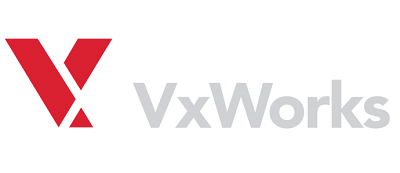
VxWorks is an RTOS created as proprietary software by Wind River Systems, a fully-owned Aptiv subsidiary. It was first released in 1987. It is mainly designed for embedded systems that need real-time and deterministic performance. Many industries need safety and security certification, including aerospace and industrial equipment, energy, transportation, network infrastructure, medical devices, robotics, defense, automotive, and consumer electronics.
VxWorks supports the AMD and Intel architecture, the POWER architecture, the ARM architectures, and the RISC-V architecture. It supports both 32-bit and 64-bit processors. It may be used in multicore symmetric multiprocessing (SMP), asymmetric multiprocessing (AMP), mixed modes, and operating system architectures.
VxWorks OS includes the kernel, third-party software, middleware, Wind River Workbench development suite, board support packages, and hardware technologies. The RTOS in VxWorks 7 has been re-engineered for flexibility and upgradeability, so the operating system kernel is distinct from applications, middleware, and other packages.
Features of the VxWorks operating System
There are various features of the VxWorks operating system. Some features of the VxWorks operating system.
- It provides memory protection.
- It provides a real-time processor.
- It is an error-handling framework.
- It has a 64-bit operating system.
- It provides an Internet Protocol Version 6 (IPV 6) networking stack.
- It includes various file systems, such as High-Reliability File System (HRFS), Network File System (NFS), and Disk Operating System Filing System (DOSFS).
- It supports symmetric multiprocessing and asymmetric multiprocessing.
embOS Operating System
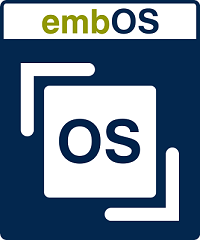
It is a priority-controlled real-time operating system. It’s been in continuous development since 1992, and it’s intended to serve as a foundation for constructing embedded applications. embOS has been installed in billions of devices across many application domains and is compatible with all main cores, compilers, and development tools.
Since 1992, it has been the leading RTOS solution for embedded engineers. It is simple and ensures predictable real-time operation for any embedded device. It’s very portable and source-compatible across all platforms and makes it easy to port apps to different cores. The tasks may be quickly established and safely communicated with each other by using communication methods such as semaphores, mailboxes, and events. Interrupt Service Routines (ISRs) may also benefit from these communication mechanisms.
Features of embOS operating system
There are various features of the embOS operating system. Some features of the embOS operating system.
- It provides powerful and easy-to-use APIs.
- It has zero interrupt latency.
- It is used in various billion devices in various application areas.
- embOS is a royalty-free operating system that may be utilized in an unlimited number of projects and comes with 1 year of technical support and free updates.
- It is available for all famous compilers, cores, and development tools.
- It provides high performance with the lowest use of memory.
FreeRTOS Operating System
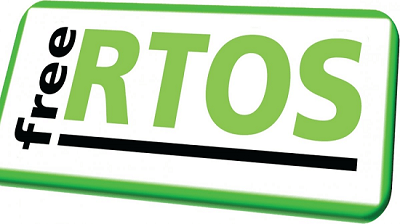
FreeRTOS is a kernel for an embedded RTOS that has been ported to 35 distinct microcontroller systems. It is released under the MIT License. In 2003, Richard Barry created the FreeRTOS kernel, which was later developed and maintained by Barry’s company, Real-Time Engineers Ltd. In 2017, the company handed up control of the FreeRTOS project to Amazon Web Services (AWS). Barry continues to work on FreeRTOS as part of an AWS team.
Microcontrollers are used in deeply embedded programs that have a very precise and focused task to complete. The size limits and dedicated nature of end applications rarely require and allow the usage of a full RTOS implementation. As a result, FreeRTOS only includes inter-task communication, timing, real-time scheduling, and synchronization primitives.
Features of FreeRTOS operating system
There are various features of the FreeRTOS operating system. Some features of the FreeRTOS operating system.
- It offers a single and independent solution for a variety of architectures and development tools.
- It offers a good, well-managed, and active free support forum.
- FreeRTOS provides a smaller and more user-friendly real-time processing option for applications where eCOS, embedded Linux, and even uCLinux would not fit, are not acceptable, or are not accessible.
- It is free for commercial apps.
- It ensures that commercial help is available if it is required.
- It is very scalable, simple, and easy to use.
LynxOS
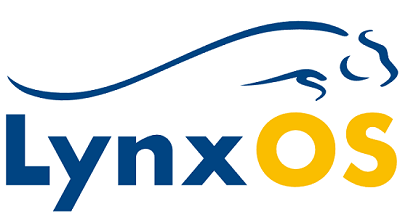
LynxOS is a real-time operating system based on UNIX that was developed by Lynx Software Technologies. It is often known as the Lynx Operating System, and it is a POSIX-compliant operating system with Linux compatibility. It is primarily utilized in real-time embedded systems, such as avionics, aerospace, military, industrial process control, and telecommunications applications. As a result, it works with military-grade security protocols like wolfSSL, a prominent TLS/SSL library.
Mitchell Bunnell developed the initial versions of LynxOS in 1986 in Dallas, Texas, for a custom-built Motorola 68010-based system. It was first to run on an Atari 1040ST, with cross-development taking place on an Integrated Solutions UNIX machine. The LynxOS operating system was ported to the Intel 80386 architecture. It included the ABI compatibility with System V.3 in 1989.
LynxOS components are built for hard real-time performance, which means they reply in a predictable amount of time. The predictable response times provide a guarantee in the presence of heavy input/output because of the unique threading model of the kernel, and it enables interrupt routines to be very short and quick.
LynxOS operating system released a specialized version of LynxOS in 2003, which is called LynxOS-178. It is mainly designed for avionics apps that need certification to industry standards like DO-178B.
Features of LynxOS operating system
There are various features of the LynxOS operating system. Some features of the LynxOS operating system.
- It provides real-time scheduling.
- It features full POSIX conformance and Linux compatibility.
- It’s mainly used for military purposes because it is compatible with military-grade security protocols like wolfSSL, a prominent TLS/SSL library.
- It is primarily utilized in real-time embedded systems, such as avionics, aerospace, military, and industrial process control.
- It provides a GCC-based toolchain.
- It provides access control and cryptographic security.
PikeOS

PikeOS is an RTOS that provides a separation kernel-based hypervisor for many other operating systems and applications. It allows you to create devices for environments with strong safety and security demands. It is compliant with the high safety standards for Automotive, Avionics and Space, Railway, Medical, and Industrial Automation markets.
PikeOS is the first choice for systems that require protection against cyber-security assaults because of its separation kernel architecture. It has also been used in several high-critical communication infrastructures with millions of IoT and edge systems.
It combines virtualization and real-time. It enables you to consolidate many sophisticated embedded circuit boards into a single hardware part. It doesn’t stop for innovative hardware concepts like Big SoCs (Systems-on-a-Chip) with numerous heterogeneous CPU cores. Finally, when it comes to certification, it provides you with the appropriate certification package to assist you in dealing with certification authorities.
It runs on several architectures. It also provides support processors that come with a Memory Management Unit (MMU) and less complex SOCs that contain a Memory Protection Unit (MPU) only.
Features of PikeOS operating system
There are various features of the PikeOS operating system. Some features of the PikeOS operating system.
- It provides support for fast and secure booting times.
- It also supports mixed-criticality through separation kernel in one system.
- It decreased the time to market by utilizing standard development and verification techniques.
- It provides support for kernel drivers and userspace drivers.
- It provides hardware independence between families and processor types.
Keil RTX RTOS

The Keil RTX is a royalty-free and deterministic RTOS that is designed for ARM7TmTDMI, ARM9Tm, and CortexTm-M CPU cores. It runs quickly and uses the smallest amount of MCU resources with a memory footprint of only 5KB (ROM). It may be used to develop apps that simultaneously perform numerous operations or tasks. It enables you to make programs that run multiple functions simultaneously, and it also helps to make apps that are better structured and more easily maintained. It is feasible to develop real-time applications without an RTOS. Various scheduling, maintenance, and timing issues may be solved better with the real-time operating system. For example, the real-time operating system allows flexible scheduling of system resources such as CPU and memory and communication between activities.
Features of RTX RTOS
There are various features of the RTX RTOS. Some features of the RTX RTOS.
- It is easy to use. It is widely supported within the µVision IDE/Debugger, which includes RTX-aware tools that allow you to debug real-time applications quickly.
- Keil RTX5 is suited for embedded systems due to its small memory footprint (down to 5KB in ROM) and high performance. Choose the optimum kernel scheduling option for your application from a variety of alternatives.
- It has fully deterministic behavior, which implies that events and interruptions are handled according to a set of rules. Process timings are predictable and consistent so that the application may rely on them.
- It provides support for multithreading and thread-safe operation.
- It comes with Keil MDK for free. It’s completely customizable, and it’s being developed on Github under the Apache 2.0 license.
- It is available for functional safety applications.
Nucleus RTOS
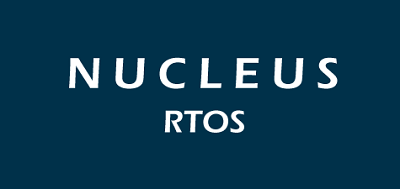
Nucleus RTOS is offered by Mentor Graphics Embedded Software Division, a Siemens Business. It is designed for real-time embedded systems such as medical, consumer, industrial, aerospace, and IoT. It supports both 32-bit and 64-bit embedded platforms. It was firstly released in 1993. Nucleus RTOS v3.x is the latest version and it includes features such as 64-bit support, Safety Certification, Power Management, Process Model, and support for heterogeneous multicore SOCs.
Its process model includes space domain partitioning for task and module isolation on SOCs. It also includes Memory Management Unit (MMU) or Memory Protection Unit (MPU) that is based on ARMv7/8 Cortex-A/R/M cores.
It is a highly scalable micro-kernel-based RTOS utilized in over 3 billion devices and built for scalability and dependability. The system reliability may be enhanced with easy memory allocation support that may operate with or without MMU and MPU-supported protection systems spanning a variety of space, industrial, and medical applications. The developers may fully utilize multicore solutions throughout the spectrum of Microcontroller and Microprocessor SoCs using SMP and AMP setups to integrate various operating systems.
Features of Nucleus RTOS
There are various features of the Nucleus RTOS. Some features of the Nucleus RTOS.
- It is a stable deterministic kernel with a small memory footprint.
- It provides file system software for FAT, LWEXT, and SAFE.
- It provides data and network security.
- It has an integrated development tool with Eclipse-Based IDE.
- It has a memory partitioning process model to improve product reliability with and without MMU.
- It provides support for USB 2.0 and 3.0.
Azure RTOS
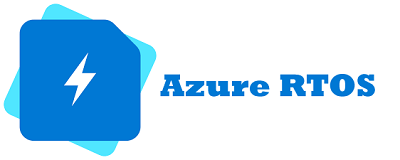
Azure real-time operating system is an embedded development suite that contains a small but effective OS that delivers consistent, ultra-fast performance for resource-constrained devices. It is simple to use and market-proven. Azure RTOS supports the most common 32-bit microcontrollers. It has been installed on over 10 billion devices globally.
Azure RTOS has already been pre-certified for various safety standards. These include the IEC 61508 SIL 4 certification, the ISO 26262 ASIL D certification, and the IEC 62304 Class C certification. It offers a secure EAL4+ Common Criteria certified environment that contains full IP layer security through IPsec and socket layer security through TLS and DTLS. FIPS 140-2 certification has been obtained for the software crypto library. You may also use memory protection through ThreadX MODULES, hardware cryptographic capabilities, and ARM’s TrustZone ARMv8-M security features.
Features of Azure RTOS
There are various features of the Azure RTOS. Some features of the Azure RTOS.
- It provides fast performance and also has a remarkably small footprint.
- Its code has been validated to fulfill high industry safety and security standards.
- It is connected to the cloud and local networks. It also helps to develop durable flash file systems and design elegant user interfaces.
- It is also connected to the popular MPUs and MCUs.
QNX Neutrino RTOS
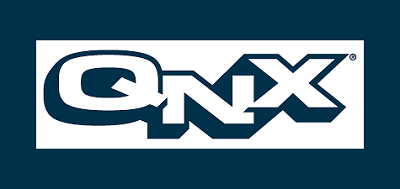
QNX Neutrino RTOS is a commercial Unix-like RTOS that is mainly designed for the embedded systems market. It was one of the first commercially successful microkernel operating systems. It was developed in the early 1980s by Quantum Software Systems, which was eventually renamed QNX Software Systems. BlackBerry Limited has acquired the QNS Software Systems in 2010.
Embedded systems designers may use the QNX Neutrino operating system to create engaging, safe, and secure devices built on a highly dependable OS software foundation that protects against system failures, malware, and cyber security breaches. It is a full-featured and robust operating system that shrinks down to fulfill the resource constraints of real-time embedded systems. Its microkernel design and modular architecture allow the customers to develop highly optimized and reliable systems with a low cost of ownership.
Features of QNX Neutrino RTOS
There are various features of the QNX Neutrino RTOS. Some features of the QNX Neutrino RTOS.
- The microkernel architecture provides the QNX Neutrino RTOS with the dependability required to operate mission-critical applications in hospitals, nuclear power plants, and even space stations.
- It supports IPv4/IPv6 over Ethernet and Wi-Fi 802.11 and offers typical network services like DNS, DHCP, FTP, HTTP, Telnet, PPP, TFTP, firewall, NFS, and NTP. It is easy to integrate other open-source networking components due to its support for POSIX APIs.
- Instant Device Activation (IDA) enables in-vehicle systems to function intelligently even before the operating system is operational.
- It has a light footprint, which helps in faster boot times. The microkernel may be up and running in less than 250 milliseconds.
- The resource manager framework offers the integration of new technologies and services via a POSIX interface that all programs may utilize.
MQX RTOS

MQX stands for the Message Queue eXecutive. It is a real-time operating system that is designed by Precise Software Technologies, Inc. It is currently sold by Synopsys, Embedded Access, Inc., and NXP Semiconductors. It offers real-time performance in a compact and flexible package. It was designed to allow you to set and balance code size and performance needs. It is tightly integrated with NXP’s latest processors and includes widely used device drivers. It is integrated with the CodeWarrior, IAR, and Keil tools to allow task-aware debugging.
It includes a TCP/IP stack (RTCS), a USB host/device stack, design, an embedded File Allocation Table-based DOS file system (MFS), debugging, and performance analysis tools. It is supported by common libraries for Transport Layer Security (TLS) and Secure Sockets Layer (SSL), such as wolfSSL for high security.
It is usually used in embedded devices. It is developed on a host machine that runs UNIX or Windows, and it cross-compiles target software to operate on several target CPU architectures. It has been ported to various platforms, and it now supports the most recent embedded CPUs, including PowerPC, ARC, Kinetis, ColdFire, ARM, StrongARM, and xScale.
Features of MQX RTOS
There are various features of the MQX RTOS. Some features of the MQX RTOS.
- It may be designed to use a minimum of 8 KB of ROM, and 2.5K RAM on an Arm Cortex M4, including the kernel, 1 LW Semaphore, an interrupt stack, 2 task apps, queues, and memory management.
- Priority-based preemptive scheduling ensures that high-priority threads achieve their deadlines constantly, no matter how many other threads compete for CPU resources.
- The code writing is very easy for this operating system with complete API and available reference documentation.
- Key components are included in both the complete and lightweight versions to control RAM/ROM consumption, size, and performance options.
- It offers developers faster development time by removing the burden of creating and maintaining an effective scheduling system and interrupt handling. It’s also quite beneficial if you need to use various communication protocols, such as USB or TCP/IP.
- It provides a framework with a simple API for creating and organizing functionality across NXP’s extensive embedded processor portfolio.
- Messages may be exchanged between processes that are executing on the same processor or even on a different processor in the system.
- A fast boot sequence ensures that the program runs quickly when the hardware has been reset.
